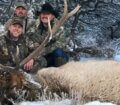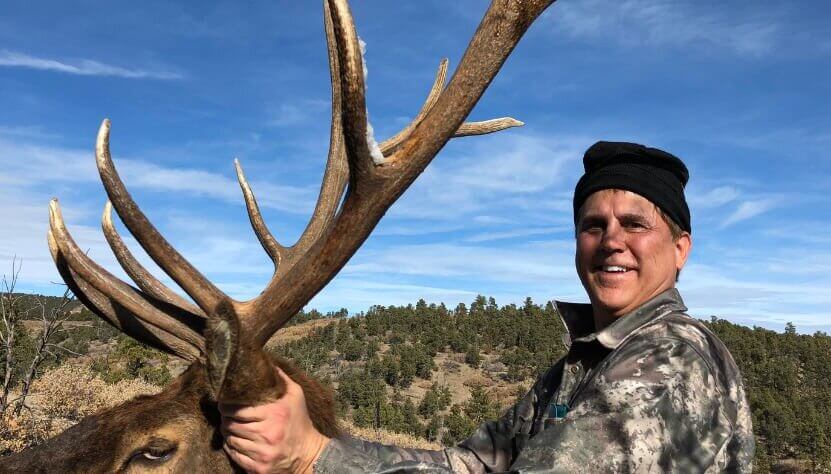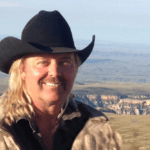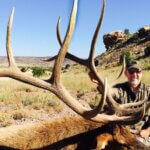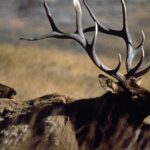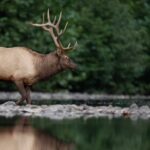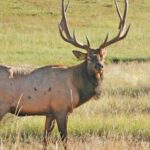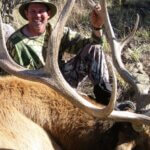Editor’s Note: “Colorado Buck” Ward lives in Texas on his cattle ranch. He’s been hunting and guiding for elk since 1985 and knows what’s required to hunt bull elk successfully.
When asked what an elk hunt cost in 2023, Ward reports, “A lot, really the cost of the hunt depends on if you’re going to book an outfitter and hunt private land or not. An elk hunt from Vermejo Park sells for about $20,000. If you go to the San Carlos Apache Indian Reservation, it will cost $40,000. The White Mountain Apache Indian Reservation hunts will cost around $30,000 each. Those prices may change. Other private hunts cost about $17,000.
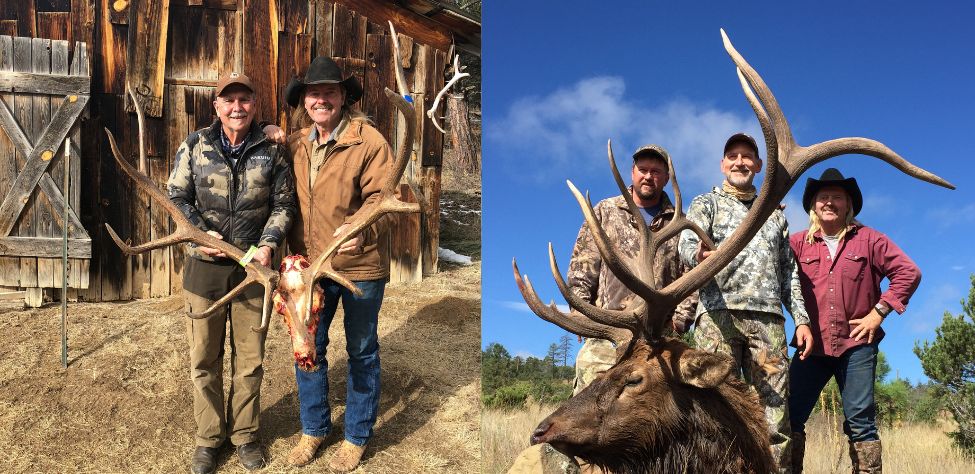
“If you can find a private land hunt where you can take a 6×6 bull that will score 300 inches, a hunt like that probably costs $10,000 to $12,000 for two hunters and one guide. That’s a good price in today’s (2023) market. Generally, if you’re on a guided hunt on public lands, most of what you’ll call in will be other elk hunters. There’s a reason an elk guide or an outfitter with the cheapest price in town has the cheapest hunts. Our hunts run $12,000 for two hunters and one guide hunt, or a one-on-one hunt – one hunter and one guide – $13,000.
“A hunter who hunts on public lands on self-guided hunts may have to make five or six trips to take a bull that scores 300 or better inches. Of course, he may take that bull on the first day of the first hunt, but on average, he’ll have to hunt five or six years to take a bull in the 300-inch range. If you count the cost to make those trips, buy tags, and purchase food, gas, and everything involved, you’ll probably spend more than if you go on one hunt with a knowledgeable guide, on a quality hunt on good land. A hunter with an outfitter not only has better places to hunt where the likelihood of seeing a bull is greater, but he’ll also have the opportunity to learn how to hunt elk from his guide.
“In the past, I’ve guided many fathers with their sons or daughters on elk hunts. However, today you rarely see that kind of client. The age of the elk hunter also has increased and now is 40 to 50 years. We’ve also taken people with disabilities and older hunters on hunts. I send out questionnaires after our and ask our clients to answer honestly. Then I can map out a better hunt that will fit the needs of each client.
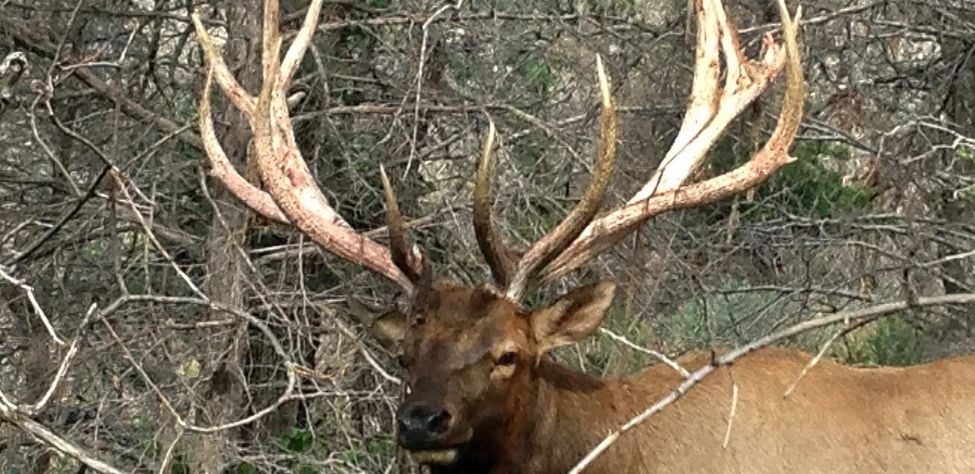
“Numbers of hunters want to go elk hunting when they’re younger but perhaps haven’t had the money to do a nice elk hunt. Today, we offer various areas of our ranch to hunters with different degrees of difficulty. If we have a hunter who’s older or out of shape or who perhaps has hip problems or knee problems, we’ll either go to those easier areas to hunt, or we’ll go to the top of a mountain and hunt down. Then when we reach the bottom of the mountain, we’ll plan for someone to come and pick us up. I can hunt effectively as slowly as anyone wants to go when I’m guiding. Our goal is to make our hunts enjoyable and not miserable.
“When a guy has been saving most of his life to go on an elk hunt, I want that client to take a nice bull, probably more than the client wants to. I’d rather a hunter leave my camp without taking a bull and be able to say to himself, ‘That was the most enjoyable hunting trip I’ve ever been on,’ as opposed to a client who’s harvested a 400-inch bull and on the way home, says, ‘That was the most-miserable hunt ever – and I’ve never had to walk so far, climb so high, or take such a physical beating.’”
To contact “Colorado Buck” Ward, call 1-800-355-8247.
Expert Guidebooks on Elk Hunting: Best Sellers
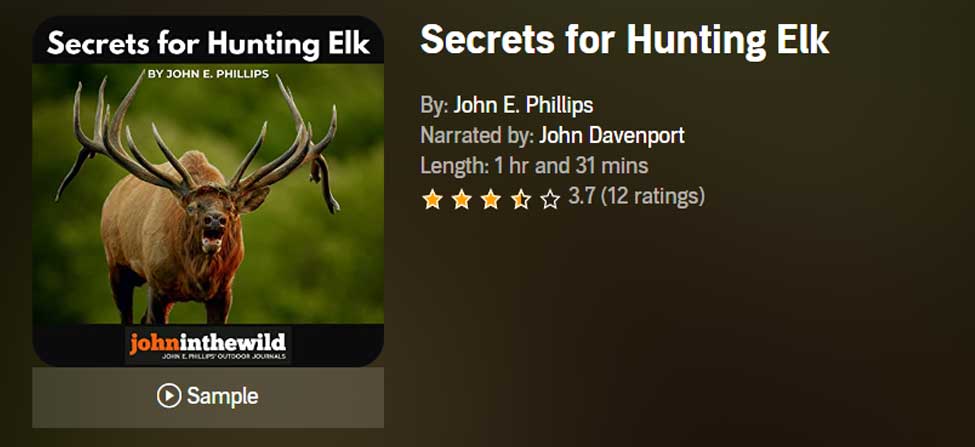
Secrets for Hunting Elk
The quickest, easiest (if there is an easy way), and safest way to find and take that bull elk of a lifetime will be to hunt with a guide.
Chad Schearer, a longtime Montana guide and TV personality, told me, “My hunter is my gun. If I get to the elk, and my hunter isn’t with me, then we don’t take the elk. My job is not only to find the elk but also to help the hunter get to the elk and make the experience as enjoyable as I can for him.” That’s the kind of fella with whom I want to go elk hunting.
An elk hunt can be tough, but it doesn’t have to be so tough that you don’t enjoy it. That’s why this elk hunting book starts with the confessions of an elk guide and with Chad Schearer’s philosophy of what the guide and the hunter’s relationship should be.
A good portion of your success will depend on your physical condition, and Matt Morrett of Harrisburg, Pennsylvania explains how an eastern hunter can get ready physically during June and July to hunt western elk, the animals he describes as, “Like deer or turkeys on steroids.”
Wayne Carlton, well-known elk hunter and TV and video personality from Montrose, Colorado, tells us what types of elk calls to use and what to say to the elk. Mike Miller of Colorado, another elk guide and Mossy Oak video personality, has tactics for the best equipment for bowhunting and gun hunting elk.
You’ll learn helpful strategies and hunting tips in this book, as well as some straightforward hunting methods that will help to make your elk hunt more successful.
“Thanks to the advice in your elk hunting books, I was able to call up a nice 6-point (6X6) bull elk! He was bugling like crazy. I called him in from about a ¼ mile away. Called him into bow range (about 40 yards away). It was a thrill!” ~Rob Brannon
VERSIONS: AUDIBLE & KINDLE
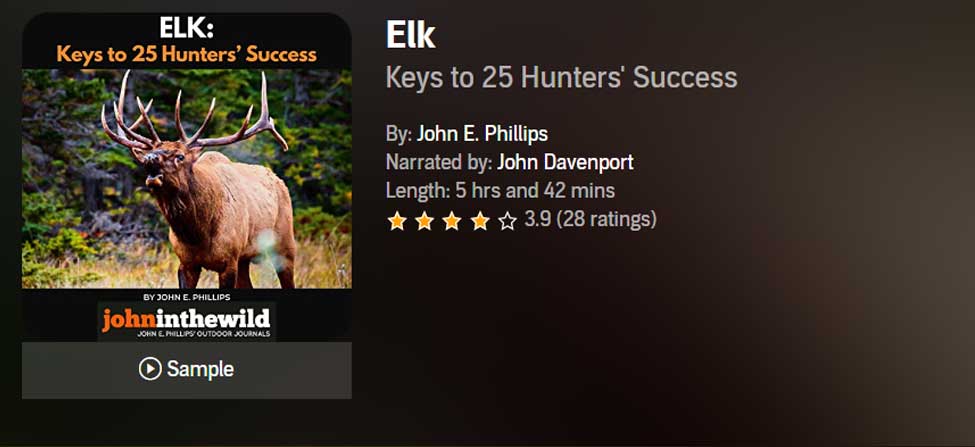
Elk: Keys to 25 Hunters’ Success
Often just one tip or tactic makes the difference in whether you take an elk home to dinner or have to hike back to the truck by yourself. In John E. Phillips’ latest elk book, Elk: Keys to 25 Hunters’ Success, you’ll learn from successful elk hunters the strategies they use to find and take elk.
Many know that the technique that seems to work most often is to hunt where other elk hunters don’t and understand where the elk are before you go on a hunt by studying data from each state, visiting HuntData (see chapter 1), examining maps, and reading postings on elk forums.
This book also tells you how to get ready physically for an elk hunt, including participating in Train to Hunt Competitions, what gear you need to take, how to enjoy a successful do-it-yourself elk hunt, or how to pick the best elk guide for you. You’ll also hear about the X System and the Broken Y System of hunting elk.
Although no one person has all the answers on how to help you find and take your elk, I’m convinced that this book’s outdoors men and women will teach you how to have satisfying elk hunts.
As my friend Karl Badger once told me, “Elk hunting doesn’t get any better than when I ride horses into the high backcountry, see two grizzly bears, hear a pack of wolves howl close to camp all night long, eat plenty of delicious food prepared on a fire and enjoy the company of good friends.”
VERSIONS: AUDIBLE, KINDLE & PRINT
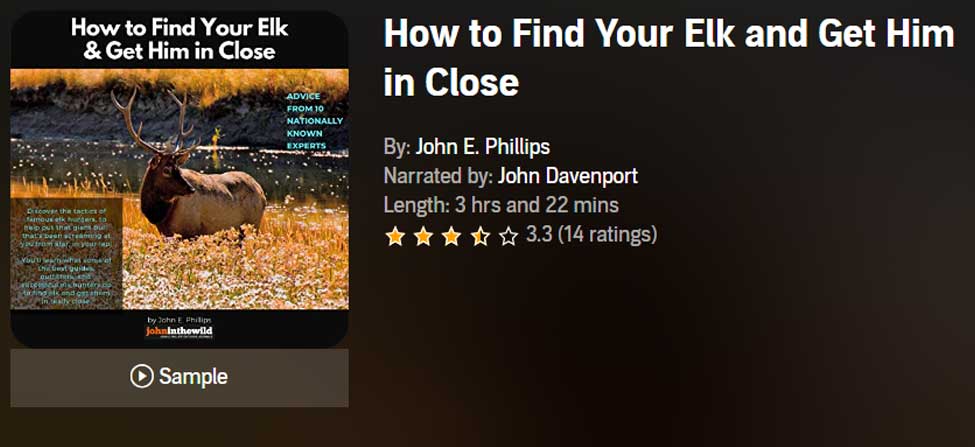
How to Find Your Elk and Get Him in Close will teach you the tactics of 10 nationally known elk hunters, to help put that giant bull that’s been screaming at you from afar, in your lap. You’ll learn what some of the best guides, outfitters, and successful elk hunters do to find elk and get them in really close.
Also in this audiobook, you’ll notice that the majority of the experts call elk to within bow range. We selected numerous bowhunters and bowhunting guides, since the bowhunter has to get much closer to a bull than the gun hunter does – often less than 20 or 30 yards – practically in your lap.
On one elk hunt, I’d heard this bull bugle all morning. My guide had called him within 30 yards, and he was standing just inside black timber. I saw the smoke from his nose wafting out into the icy air less than 30-yards away. All the bull had to do was step out, and I could take the shot with my bow. But then, through no fault of my guide or me, the bull vanished.
The only conclusion I could come up with to understand why the bull I wanted to take with my bow hadn’t stepped out and given me a shot, was because he got raptured. He evidently had left the earth with no trace of himself.
This hunt was when I started wanting to learn more about hunting elk up close. In this book, I’ve tried to find some of the most knowledgeable, experienced, and practical elk hunters. I’ve always found that the best way to learn any outdoor skill, is to either hunt or fish with the best sportsmen in that field.
Often, in elk hunting, that means elk guides, who generally hunt every day of the season and receive a salary for every hunter they guide. So, I’ve put together a group of some of the best elk hunters I know to help us all learn how to find bull elk and get them in close.
VERSIONS: AUDIBLE, KINDLE & PRINT
Tomorrow: Calling Elk – Guiding to Bears and Muleys


